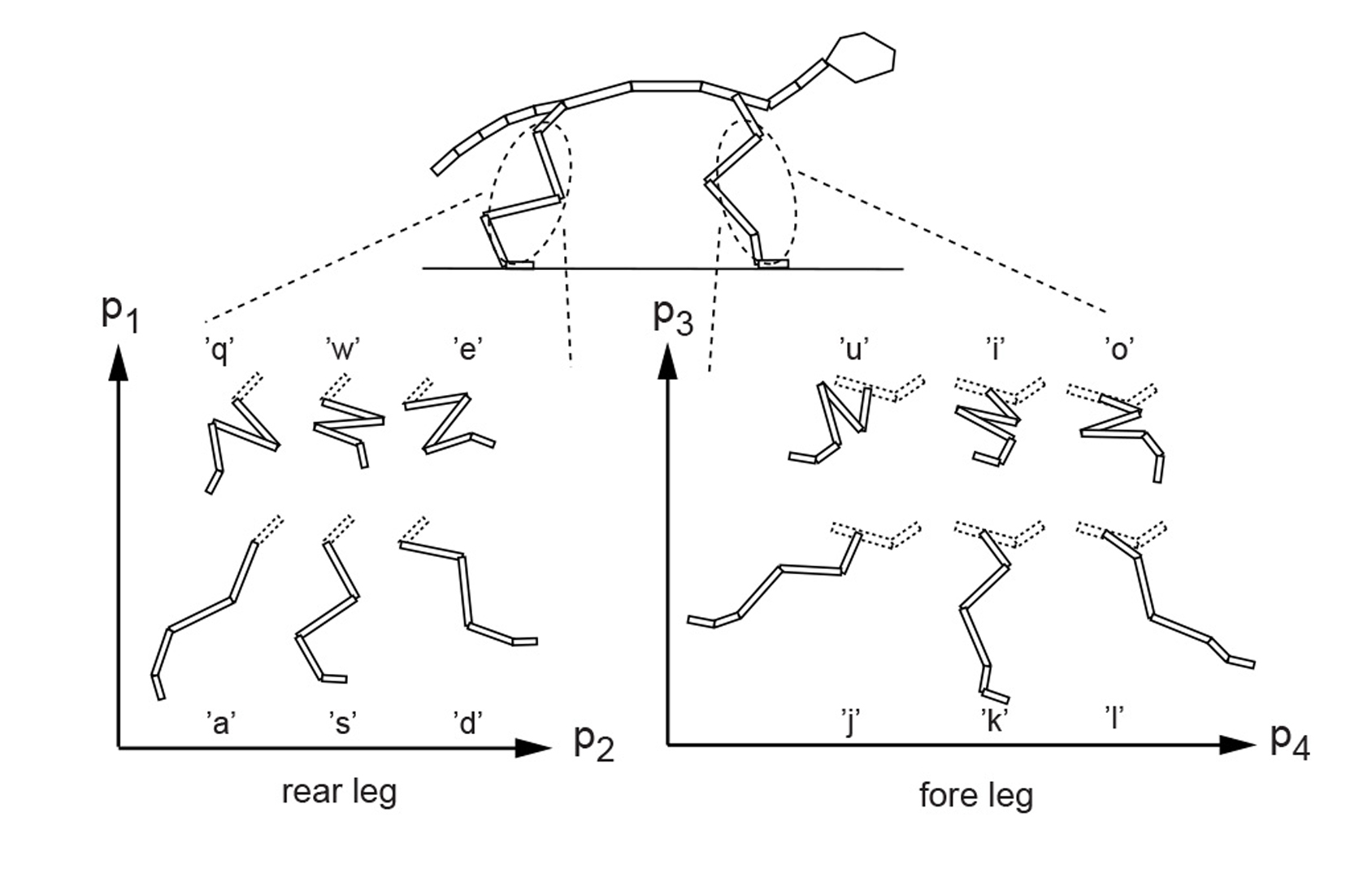“Interactive control for physically-based animation” by Laszlo, Panne and Fiume
Conference:
Type(s):
Title:
- Interactive control for physically-based animation
Presenter(s)/Author(s):
Abstract:
We propose the use of interactive, user-in-the-loop techniques for controlling physically-based animated characters. With a suitably designed interface, the continuous and discrete input actions afforded by a standard mouse and keyboard allow for the creation of a broad range of motions. We apply our techniques to interactively control planar dynamic simulations of a bounding cat, a gymnastic desk lamp, and a human character capable of walking, running, climbing, and various gymnastic behaviors. The interactive control techniques allows a performer’s intuition and knowledge about motion planning to be readily exploited. Video games are the current target application of this work.
References:
1. K. Amaya, A. Bruderlin, and T. Calvert. Emotion from mo-tion. In Graphics Interface ’96, pages 222-229, May 1996.
2. W. W. Armstrong and M. Green. The dynamics of articu-lated rigid bodies for purposes of animation. Proceedings of Graphics Interface ’85, pages 407-415, 1985.
3. N. I. Badler, B. Barsky, and D. Zeltzer. Making Them Move. Morgan Kaufmann Publishers Inc., 1991.
4. R. M. Baecker. Interactive computer-mediated animation. PhD thesis, Massachusetts Institute of Technology, 1969.
5. A. Bruderlin and T. W. Calvert. Goal-directed anima-tion of human walking. Proceedings of ACM SIGGRAPH, 23(4):233-242, 1989.
6. A. Bruderlin and T. W. Calvert. Interactive animation of per-sonalized human locomotion. Proceedings of Graphics Inter-face, pages 17-23, 1993.
7. B. R. Donald and F. Henle. Using Haptic Vector Fields for An-imation Motion Control. Technical Report PCS-TR99-353, Dartmouth College, Computer Science, Hanover, NH, May 1999.
8. J. Auslander et al. Further experience with controller-based automatic motion synthesis for articulated figures. ACM Transactions on Graphics, October 1995.
9. J. K. Hodgins et al. Animating human athletics. Proceedings of SIGGRAPH 95, ACM Computer Graphics, pages 71-78, 1995.
10. T. Ertl et al. Interactive control of biomechanical animation. The Visual Computer, pages 459-465, 1993.
11. D. Forsey and J. Wilhelms. Techniques for interactive ma-nipulation of articulated bodies using dynamic analysis. In Proceedings of Graphics Interface ’88, pages 8-15, 1988.
12. M. Girard. Interactive design of computer-animated legged animal motion. IEEE Comptuer Graphics and Applications, 7(6):39-51, June 1987.
13. R. Grzeszczuk and D. Terzopoulos. Automated learning of muscle-actuated locomotion through control abstraction. Pro-ceedings of SIGGRAPH 95, ACM Computer Graphics, pages 63-70, 1995.
14. R. Grzeszczuk, D. Terzopoulos, and G. Hinton. Neuroani-mator: Fast neural network emulation and control of physics-based models. Proceedings of SIGGRAPH 98, pages 9-20, July 1998. ISBN 0-89791-999-8. Held in Orlando, Florida.
15. H. Ko and N. Badler. Animating human locomotion with in-verse dynamics. IEEE Computer Graphics and Applications, pages 50-59, 1996.
16. E. Kokkevis, D. Metaxas, and N. Badler. User-controlled physics-based animation for articulated figures. In Proceed-ings of Computer Animation ’96, 1996.
17. A. Menache. Understanding Motion Capture for Computer Animation and Video Games. Morgan Kaufmann, 1999.
18. Namco. Tekken, tekken2, and tekken3. computer game, 1998, 1999.
19. J. T. Ngo and J. Marks. Spacetime constraints revisited. Pro-ceedings of SIGGRAPH 93, pages 343-350, 1993.
20. Interplay Productions. Die by the sword. computer game, 1998.
21. M. Rosenthal. Dynamic digital hosts. Computer Graphics World’s Digital Magic, pages 39-42, August 1998.
22. T. B. Sheridan. Telerobotics, Automation, and Human Super-visory Control. MIT Press, 1992.
23. K. Sims. Evolving virtual creatures. Proceedings of SIG-GRAPH 94, ACM Computer Graphics, pages 15-22, 1994.
24. D. J. Sturman. Computer puppetry. IEEE Computer Graphics and Applications, 18(1):38-45, January/February 1998.
25. J. Troy. Dynamic Balance and Walking Control of Biped Mechanisms. PhD thesis, Iowa State University, 1995.
26. J. Troy. Real-time dynamic balancing and walking control of a 7-link planar biped. In Proceedings of ASME Design Engineering Technical Conferences, 1998.
27. J. Troy and M. Vanderploeg. Interactive simulation and con-trol of planar biped walking devices. In Workshop on Simula-tion and Interaction in Virtual Environments, pages 220-224, July 1995.
28. M. Unuma, K. Anjyo, and R. Takeuchi. Fourier principles for emotion-based human figure animation. Proceedings of SIG-GRAPH 95, ACM Computer Graphics, pages 91-96, 1995.
29. M. van de Panne and E. Fiume. Sensor-actuator networks. Proceedings of SIGGRAPH 93, pages 335-342, 1993.
30. M. van de Panne, R. Kim, and E. Fiume. Virtual wind-up toys for animation. Proceedings of Graphics Interface ’94, pages 208-215, 1994.





